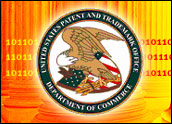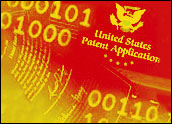
A small networking company is suing three tech titans for patent infringement. Cygnus Systems has filed suit in the U.S. District Court in Arizona, alleging that Microsoft, Google and Apple have all violated a patent Cygnus received in March 2008 on the use of document preview icon, or so-called thumbnail, technology.
The patent is described as a method for accessing a computer file via a graphical icon, which features an image of a portion of the file.
Google, Microsoft and Apple, according to the suit, are using the technology in their respective software applications — specifically in Google’s Chrome; Microsoft’s Vista and Internet Explorer 8; and Apple’s iPhone, Safari and Mac OS X Leopard, as well as Leopard’s accompanying “finder” and “cover flow” features.
Long Path
This suit is at the beginning stages of what will likely be a long process, Charles Baker, a partner with Porter & Hedges, told the E-Commerce Times.
In general, patent infringement cases tend to take a long time to be resolved, he said. In this case, because of the companies involved, every step is bound to be scrutinized deeply and possibly take longer.
“It could take several years before the case ever comes to trial — there will be various motions filed, a motion for summary judgment and so on.” Furthermore, he added, with the potential stakes involved, none of the companies are going to roll over.
Another Patent Troll?
Indeed, Cygnus will be facing some significant headwinds as it pursues this case. For starters, this lawsuit is likely to be labeled a patent troll suit.
Also, patents such as this one — known as “method patents” — can be dicey to protect, David Loewenstein, a partner in international IP law firm Pearl Cohen Zedek and Latzer/a>, told the E-Commerce Times. “They have to prove someone performed all of the steps in the claimed method,” he said.
The patent may be subject to a strong invalidation challenge based on 30 years of prior code and articles — even though the priority date for the patent in the suit dates back to 1998, said Raymond Van Dyke, a software technology attorney in the Washington, DC office of Merchant & Gould.
“This suit concerns the commonly used icons used in many software products to represent actual files,” he told the E-Commerce Times. Xerox Parc, for instance, employed this concept in the 1970s, and others did before that.
“One of the problems in software patent cases is the dearth of ‘prior art’ during the ’60s, ’70s, ’80s and even into the ’90s — programmers did not always publish their code and algorithms, and due to a series of confusing Supreme Court cases, many thought that software was not patentable,” he said. “This belief persists today despite the evidence to the contrary. The Supreme Court is not likely to outlaw software patenting anytime soon since these innovations are a core American product.”
Another factor to take into account is the prosecution history of this case, Van Dyke said, referring to the correspondence between investors and the Patent and Trademark Office.
“In the course of the getting the patent, the claims — which measure the patent right — were severely amended, restricting them in scope. In this litigation, the claims will be constricted further due to these amendments and case law.” The Supreme Court has refined the extent patentees can extend their claims to constitute infringement in an earlier decision, he noted. “By virtue of the extensive number of amendments made to the claims being asserted here, the plaintiff will have an uphill battle asserting them against these defendants, who have the means and wherewithal to contest the suit.”
Still a Way
There is a possible path for success for Cygnus — albeit a narrow and uncertain one, Joel J. Felber, an attorney with Ostrolenk, Faber, Gerb & Soffen, told the E-Commerce Times
Cygnus’ complaint describes its patent as relating to methods and systems for accessing one or more computer files via a graphical icon, wherein the graphical icon includes an image of a selected portion or portions of the one or more computer files, he said, citing the patent language.
“The initial response in the industry would appear to be that this is known and that the suit is unlikely to succeed.”
However, the complaint appears to oversimplify all of the limitations of the patent, Felber continued. Particularly, claim 1, and all of the claims generally, requires that the icon “is created while [an] application … was manipulating the icon’s corresponding one or more computer files[.]” Further, claim 1 requires “linking the icon to the application” and “invoking the application for manipulating the … content … upon selection of the icon.”
In other words, the patent seems to require that the same application that manipulates a file, while an icon that includes at least a portion of the content of the file is created, is launched when the user selects the icon, he explained.
“If the defendants intend to invalidate the patent based on prior art, they will have demonstrate that this combination of limitations was known. If they cannot, and if Microsoft’s, Apple’s and/or Google’s methods work exactly in this way, then Cygnus may indeed prevail.”













































Free PDF download of Cygnus’ patent at Patent Retriever http://www.patentretriever.com